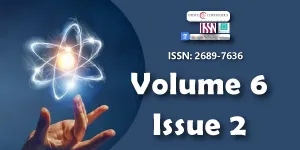A substance with negative mass
Main Article Content
Abstract
The conditions for the formation of a substance with a negative mass are investigated. The critical velocity of a body ω = 235696.8871 km/s, necessary for its transition to a massless state, was determined by two independent methods. Zeroing of the mass of matter also occurs at a temperature T =2.17 . 1036 mo (mo is the rest mass of the particle in grams). At higher temperatures or speeds of movement, the mass of bodies becomes negative. The resulting formulas made it possible to calculate the masses of X,Y-bosons equal to 4.606 . 10-9 g. The temperature of the Superunification of the four fundamental interactions, including gravity, is estimated to be 4.72 . 1031 K.
Downloads
Article Details
Copyright (c) 2023 Golovkin BG.

This work is licensed under a Creative Commons Attribution 4.0 International License.
Licensing and protecting the author rights is the central aim and core of the publishing business. Peertechz dedicates itself in making it easier for people to share and build upon the work of others while maintaining consistency with the rules of copyright. Peertechz licensing terms are formulated to facilitate reuse of the manuscripts published in journals to take maximum advantage of Open Access publication and for the purpose of disseminating knowledge.
We support 'libre' open access, which defines Open Access in true terms as free of charge online access along with usage rights. The usage rights are granted through the use of specific Creative Commons license.
Peertechz accomplice with- [CC BY 4.0]
Explanation
'CC' stands for Creative Commons license. 'BY' symbolizes that users have provided attribution to the creator that the published manuscripts can be used or shared. This license allows for redistribution, commercial and non-commercial, as long as it is passed along unchanged and in whole, with credit to the author.
Please take in notification that Creative Commons user licenses are non-revocable. We recommend authors to check if their funding body requires a specific license.
With this license, the authors are allowed that after publishing with Peertechz, they can share their research by posting a free draft copy of their article to any repository or website.
'CC BY' license observance:
|
License Name |
Permission to read and download |
Permission to display in a repository |
Permission to translate |
Commercial uses of manuscript |
|
CC BY 4.0 |
Yes |
Yes |
Yes |
Yes |
The authors please note that Creative Commons license is focused on making creative works available for discovery and reuse. Creative Commons licenses provide an alternative to standard copyrights, allowing authors to specify ways that their works can be used without having to grant permission for each individual request. Others who want to reserve all of their rights under copyright law should not use CC licenses.
Bondi H. Negative Mass in General Relativity. Reviews of Modern Physics. 1957; 29: 423–428.
Bonnor WB. Negative Mass in General Relativity. General Relativity and Gravitation. 1989; 24: 1143–1157.
Forward R. Rocket engine on the substance of negative mass. J of Propulsion and Power. 1989; 28–37.
Serga EV. Physical vacuum as a form of matter: a new look at the structure and properties. Space exploration. 2017; 2: 85100. DOI: 10.7256/2453-8817.2017.2.23245.
Golovkin BG. Negative mass is a component of the Universe. Noosphere Society Person. 2019. URL: http://noocivil.esrae.ru/259-1903.
Golovkin BG. Newton's Second Law in Special Theory of Relativity. Journal of Physics & Optics Sciences. 2022; 173. SRC/JPSOS/199. DOI: doi.org/10.47363/JPSOS/2022(4)173.
Feinberg EL. Is it possible to consider the relativistic change in the scales of length and time as a result of the action of some forces? // Einstein collection (1975-1976). M. Science. 1978; 43–77.
Syrovatsky SI. On the question of the "delay" of the relativistic contraction of moving bodies. Einstein collection (1975-1976). M Science. 1978; 78– 81.
Corbalan F. The Golden Ratio. The Beautiful Language of Mathematics. Deagostini. 2010.
Vygodsky MYa. Handbook of higher mathematics. M. Fizmatlit. 1973; 872. With. 425.
Golovkin BG. Gravitational interactions of bodies from the point of view of different principles of equivalence. World Scientific News. 2020; 141: 48–65.
Golovkin BG. Proof of Einstein`s postulates. Ann Math Phis. 2022; 5: 13–20. DOI: https://dx.doi.org/10.17352/amp. 000035.
Golovkin BG. New Particle Mechanics with Negative Mass. World Scientific News. 2019; 126: 283–290.
Ishkhanov BS, Kapitonov IM, Yudin NP. Particles and atomic nuclei. M. Lenand. 2019; 548, 551, 605. 672.
Okun LB. Leptons and quarks. M "Science". The main edition of Physical and Mathematical literature.1990. 346.

